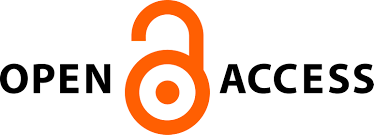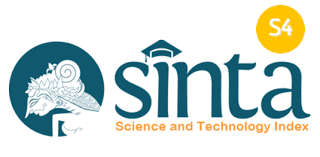THE EFFECT OF SEPTAGE SLUDGE AND EM4 ADDITION IN A DUAL-CHAMBER MICROBIAL FUEL CELL TREATING BATIK WASTEWATEREFFECT OF ADDITION OF IPLT SLUDGE AND EFFECTIVE MICROORGANISMS (EM4) IN DUAL CHAMBER MICROBIAL FUEL CELL TO TREAT BATIK INDUSTRY WASTEWATER
Main Article Content
Abstract
The Indonesian Ministry of Industry stated that the production of batik cloth in 2017 reached an average of 500 million meters/year, which is equivalent to 25 million m3/year of water. With a large water demand in the production process, the batik industry can cause water pollution in waterbodies. The Dual-Chamber Microbial Fuel Cell (DCMFC) system can reduce organic pollutant levels in wastewater and produce electrical energy simultaneously. The purpose of this research was to study the effect of the addition of septage sludge and EM4 consortium on the power density produced by the DCMFC system and to study the effect of pH differences in the DCMFC system on the removal of COD. The effect of variations in the addition of sewage treatment plant sludge and EM4 on the production of electrical energy obtained results that are too large a difference. This result was attributed to several factors, including electric current, electric voltage, microorganism growth, and pH. The maximum power density in the EM4 variation was 297.61 mW/m2, the power density in the septage sludge variation was 287,26 mW/m2, and the control reactor power density was 185.99 mW/m2. The optimal pH for septage sludge and EM4 to degrade COD is about 7. In the DCMFC systems with EM4, MLSS values increased steadily from 1500 mg/L to 1800 mg/L regardless of pH. In the systems with septage sludge showed pH-dependent effects on MLSS (in the range of 1250-2400 mg/L), with pH 7 being detrimental. Biofilm formation on the anode increased over time in EM4 systems across all pH conditions, with notable growth in septage sludge systems observed at pH 6. The COD removal of the septage sludge and EM4 was highest at 33.83 and 40.76%, respectively.
Downloads
Article Details
Submission of a manuscript to Jurnal Purifikasi means that the work has never been published in another journal and is not under consideration for publication elsewhere. The author hereby agrees to submit the copyright of the manuscript and its contents to Jurnal Purifikasi, if accepted for publication. Accepted manuscripts will be published in printed form where the ISSN is bound in printed form, not in online form (pdf). Authors are not allowed to publish their work in other forms (journals) without permission from the Jurnal Purifikasi manager.
By submitting a manuscript, the author is deemed to know all the rights and obligations attached to each manuscript.








